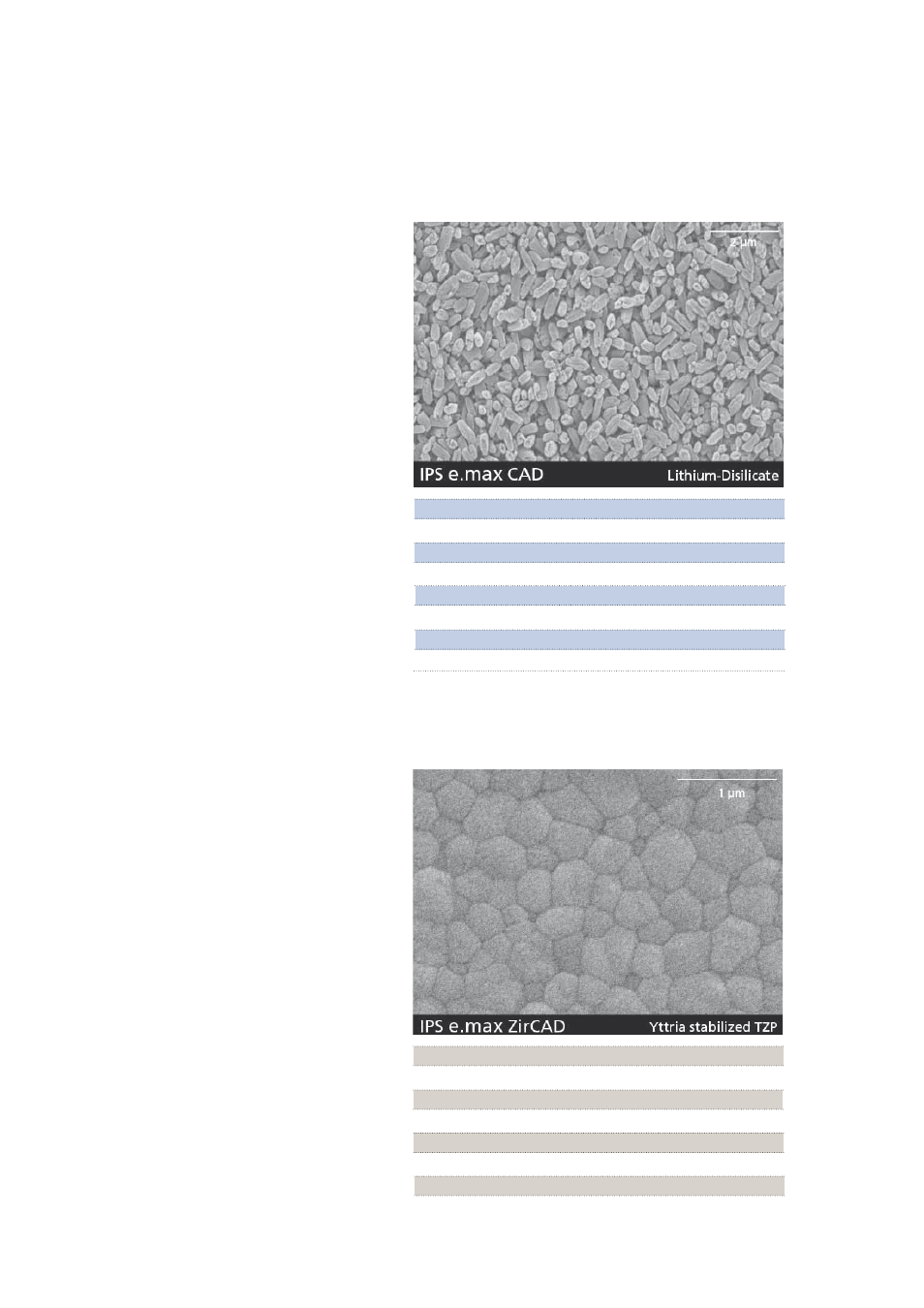Materials for the ips e.max cad-on technique – Ivoclar Vivadent IPS e.max CAD-on User Manual
Page 5

5
IPS e.max CAD
IPS e.max CAD is a lithium disilicate glass-ceramic
block for the CAD/CAM technique. It is manu-
factured using an innovative process which
provides an impressive homogeneity of the material.
The block can be processed very easily in a CAD/
CAM unit in this crystalline intermediate stage
(metasilicate). The typical and striking colour of
IPS e.max CAD ranges from whitish to blue and
bluish-grey. This shade is a result of the composi-
tion and the microstructure of the glass-ceramic.
The strength of the material in this processable
intermediate phase is 130–150 MPa.
The crystallization takes places in a combined
IPS e.max CAD-on Fusion/Crystallization firing in
an Ivoclar Vivadent ceramic furnace (e.g.
Programat
®
P700). This leads to a change in the
microstructure in the IPS e.max CAD material,
during of which lithium disilicate crystals grow. The
final physical properties, such as the flexural
strength of 360 MPa, and the desired optical
properties are achieved through the transformation
of the microstructure.
IPS e.max ZirCAD
IPS e.max ZirCAD is a pre-sintered yttrium-
stabilized zirconium oxide block for the CAD/CAM
technique. The blocks are available both shaded
and unshaded. IPS e.max ZirCAD can be processed
very easily in a CAD/CAM unit in its partly sintered,
"chalk-like" state. Milling is carried out with an
enlargement of the framework of approximately
20–25%. Given the controlled manufacturing
process of the blocks, combined with an coordi-
nated sintering process in a high temperature
furnace (e.g. Programat S1) the shrinkage of the
enlarged milled frameworks can be controlled in
such a way that excellent accuracy of fit can be
achieved. During the sintering procedure, the final
material-specific properties of IPS e.max ZirCAD
are achieved. In the process, a structure that is
densified to more than 99% is created, which
features a high flexural strength (>900 MPa) com-
bined with high fracture toughness (5.5 MPa m
0.5
)
and thus fully meets the clinical requirements
presented by masticatory forces – particularly in
the posterior region.
CTE (100-400°C) [10
-6
/K]
10.2
CTE (100-500°C) [10
-6
/K]
10.5
Flexural strength (biaxial) [MPa]*
360
Fracture toughness [MPa m
0.5
]
2.25
Modulus of elasticity [GPa]
95
Vickers hardness [MPa]
5800
Chem. solubility [µg/cm
2
]*
40
Crystallization temperature [°C]
840 – 850
*according to ISO 6872
Materials for the IPS e.max CAD-on technique
CTE (100-400°C) [10
-6
/K]
10.8
CTE (100-500°C) [10
-6
/K]
10.8
Flexural strength (biaxial) [MPa]*
900
Fracture toughness [MPa m
0.5
]
5.5
Vickers hardness [MPa]
13000
Chem. solubility [µg/cm
2
]*
1
Sinter temperature [°C]
1500
*according to ISO 6872
